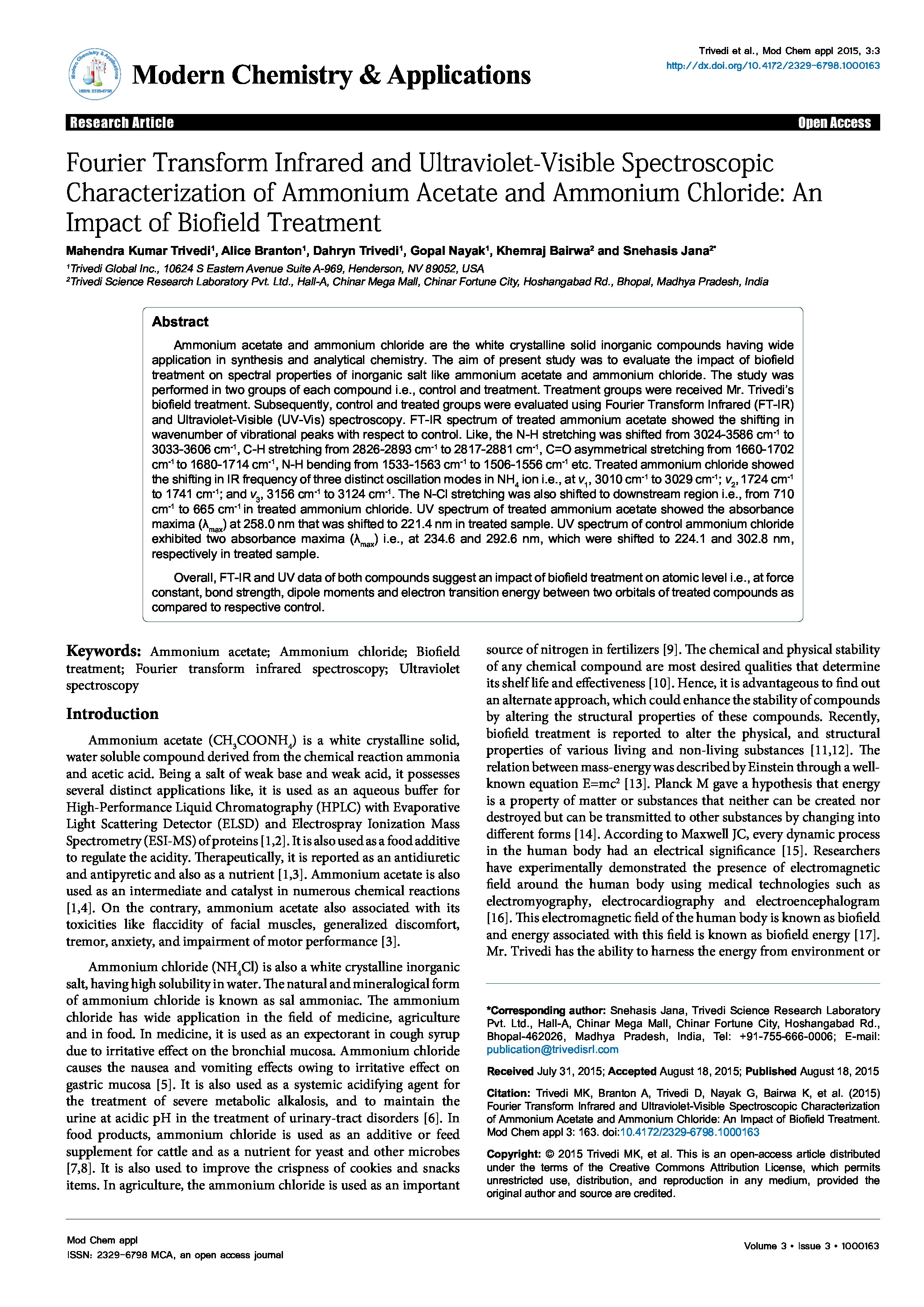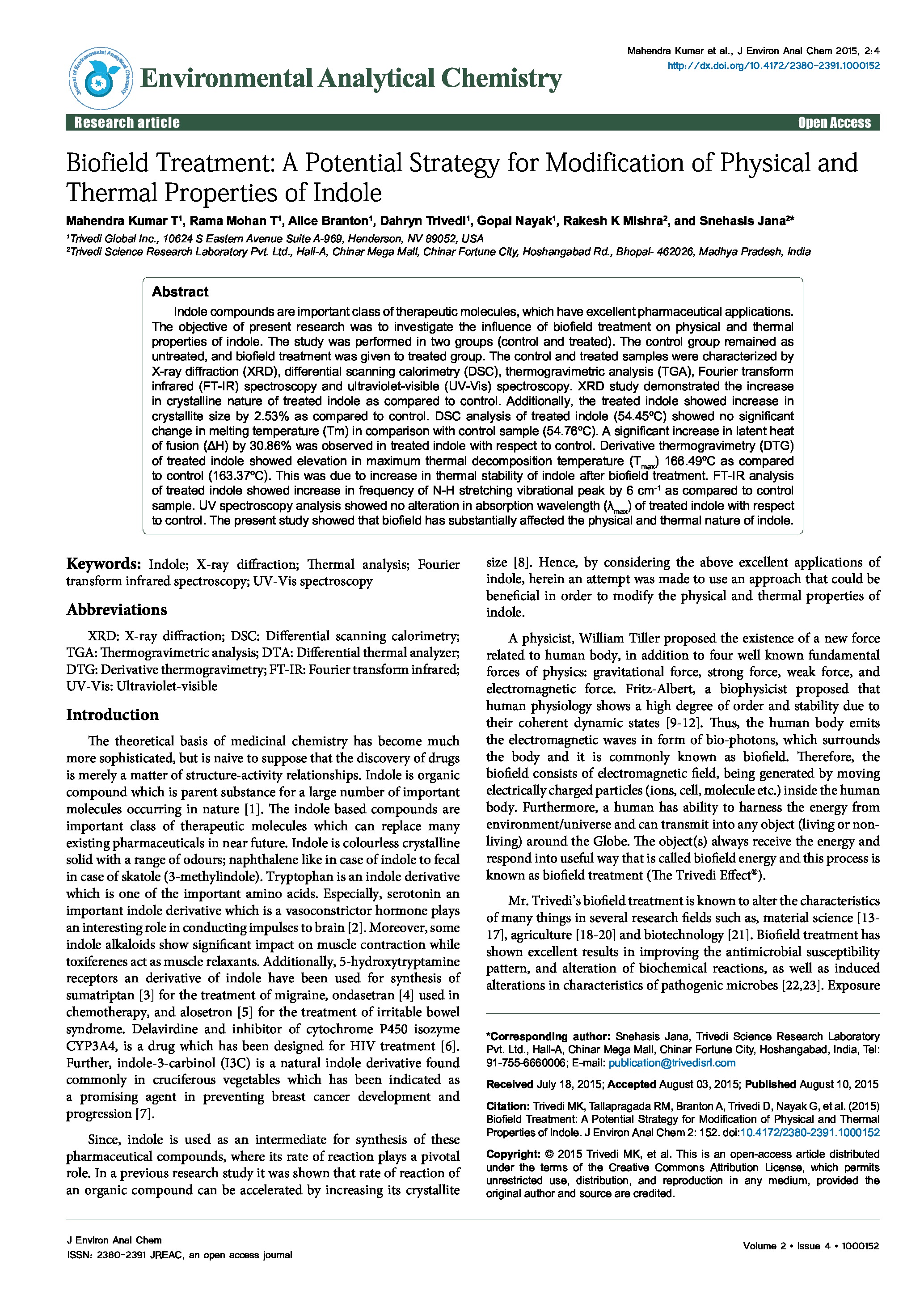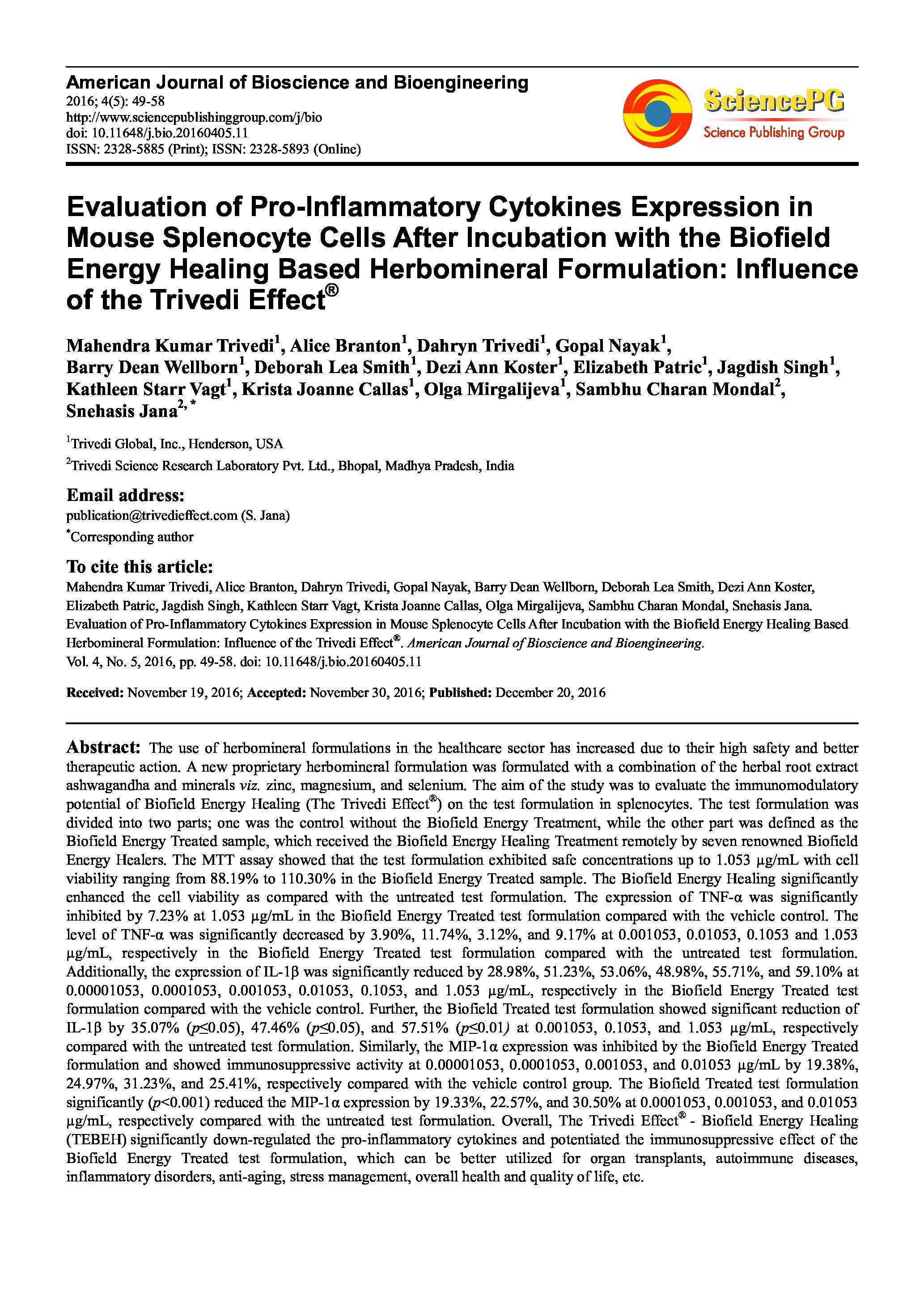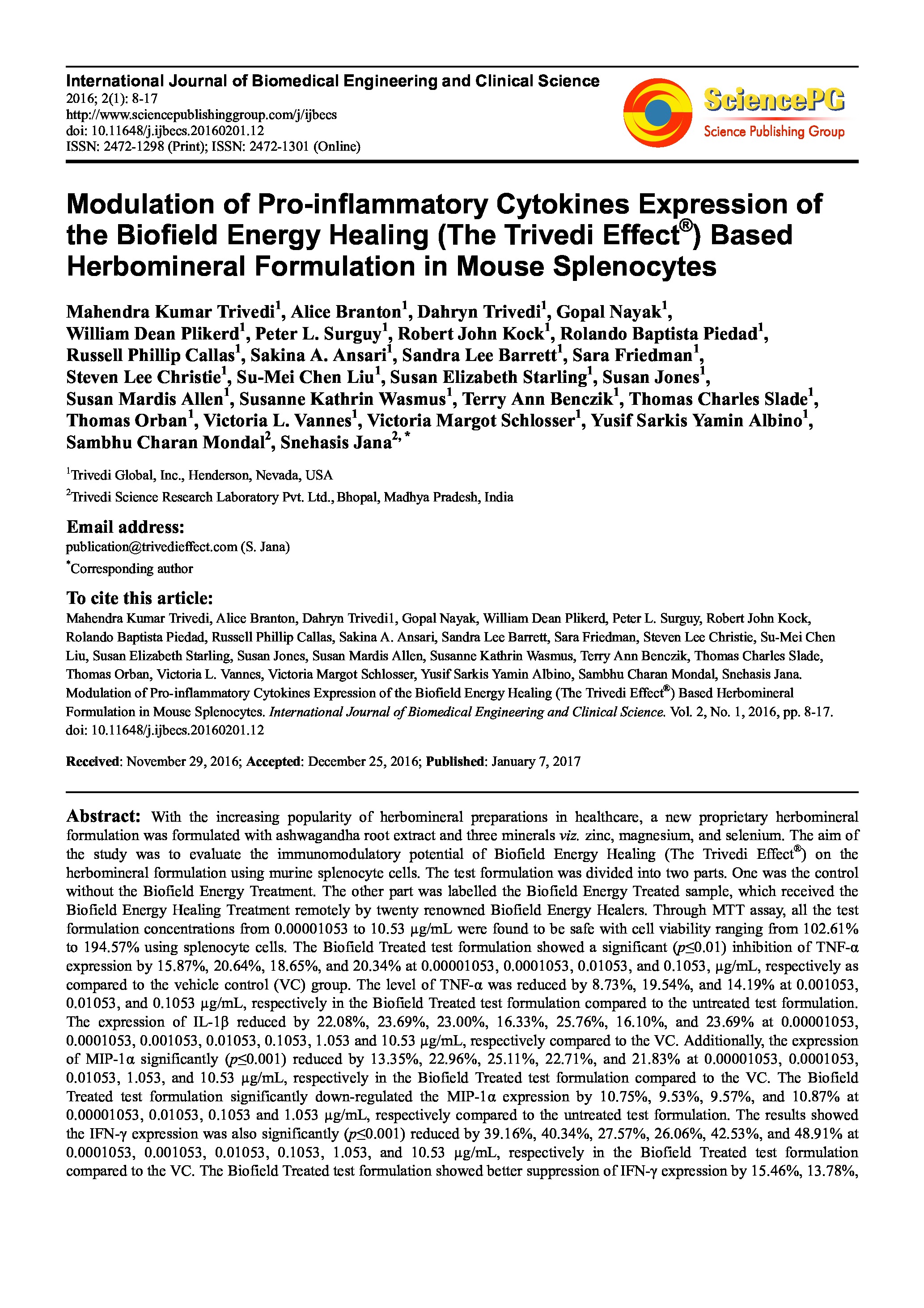Date of upload:
14.01.2017
Co-author:
Mahendra Kumar Trivedi, Alice Branton, Gopal Nayak, William Dean Plikerd, Peter L. Surguy, Robert John Kock, Rolando Baptista Piedad, Russell Phillip Callas, Sakina A. Ansari, Sandra Lee Barrett, Sara Friedman, Steven Lee Christie, Su-Mei Chen Liu, Susan Elizabeth Starling, Susan Jones, Susan Mardis Allen, Susanne Kathrin Wasmus, Terry Ann Benczik, Thomas Charles Slade, Thomas Orban, Victoria L. Vannes, Victoria Margot Schlosser, Yusif Sarkis Yamin Albino, Sambhu Charan Mondal, Snehasis Jana
Abstract:
With the increasing popularity of herbomineral preparations in healthcare, a new proprietary herbomineral formulation was formulated with ashwagandha root extract and three minerals viz. zinc, magnesium, and selenium. The aim of the study was to evaluate the immunomodulatory potential of Biofield Energy Healing (The Trivedi Effect®) on the herbomineral formulation using murine splenocyte cells. The test formulation was divided into two parts. One was the control without the Biofield Energy Treatment. The other part was labelled the Biofield Energy Treated sample, which received the Biofield Energy Healing Treatment remotely by twenty renowned Biofield Energy Healers. Through MTT assay, all the test formulation concentrations from 0.00001053 to 10.53 µg/mL were found to be safe with cell viability ranging from 102.61% to 194.57% using splenocyte cells. The Biofield Treated test formulation showed a significant (p≤0.01) inhibition of TNF-α expression by 15.87%, 20.64%, 18.65%, and 20.34% at 0.00001053, 0.0001053, 0.01053, and 0.1053, µg/mL, respectively as compared to the vehicle control (VC) group. The level of TNF-α was reduced by 8.73%, 19.54%, and 14.19% at 0.001053, 0.01053, and 0.1053 µg/mL, respectively in the Biofield Treated test formulation compared to the untreated test formulation. The expression of IL-1β reduced by 22.08%, 23.69%, 23.00%, 16.33%, 25.76%, 16.10%, and 23.69% at 0.00001053, 0.0001053, 0.001053, 0.01053, 0.1053, 1.053 and 10.53 µg/mL, respectively compared to the VC. Additionally, the expression of MIP-1α significantly (p≤0.001) reduced by 13.35%, 22.96%, 25.11%, 22.71%, and 21.83% at 0.00001053, 0.0001053, 0.01053, 1.053, and 10.53 µg/mL, respectively in the Biofield Treated test formulation compared to the VC. The Biofield Treated test formulation significantly down-regulated the MIP-1α expression by 10.75%, 9.53%, 9.57%, and 10.87% at 0.00001053, 0.01053, 0.1053 and 1.053 µg/mL, respectively compared to the untreated test formulation. The results showed the IFN-γ expression was also significantly (p≤0.001) reduced by 39.16%, 40.34%, 27.57%, 26.06%, 42.53%, and 48.91% at 0.0001053, 0.001053, 0.01053, 0.1053, 1.053, and 10.53 µg/mL, respectively in the Biofield Treated test formulation compared to the VC. The Biofield Treated test formulation showed better suppression of IFN-γ expression by 15.46%, 13.78%, 17.14%, and 13.11% at concentrations 0.001053, 0.01053, 0.1053, and 10.53 µg/mL, respectively compared to the untreated test formulation. Overall, the results demonstrated that The Trivedi Effect®- Biofield Energy Healing (TEBEH) has the capacity to potentiate the immunomodulatory and anti-inflammatory activity of the test formulation. Biofield Energy may also be useful in organ transplants, anti-aging, and stress management by improving overall health and quality of life.




